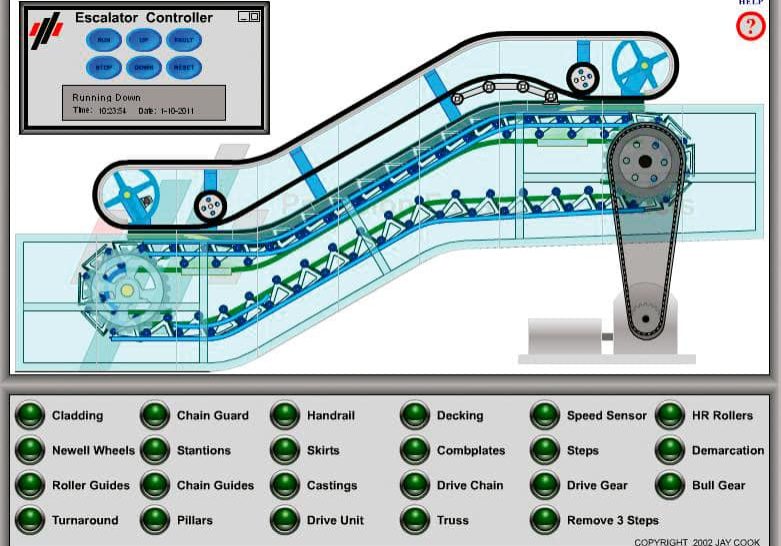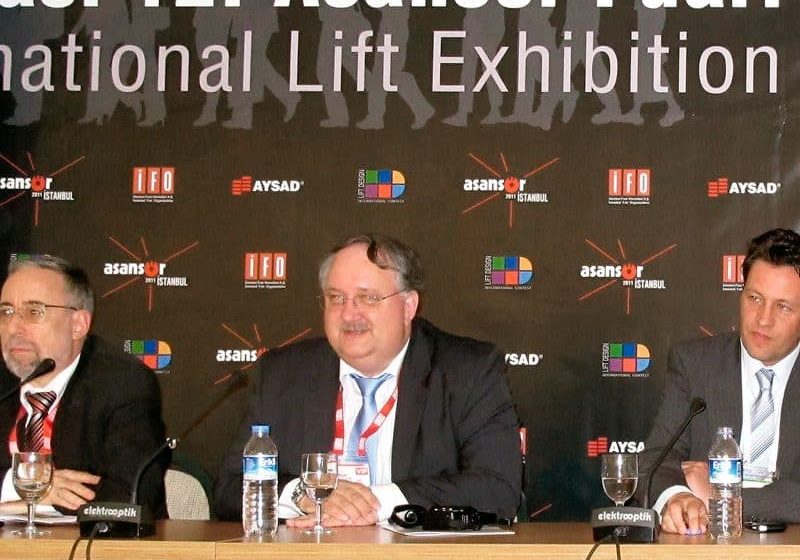Elevators are the only mechanical/electrical systems with which building occupants physically interact on a regular basis. Light switches and plumbing fixtures for the most part, are passive until such time as a person turns them on or off; thermostats, once set, are left alone to control the building’s environment. People routinely ride escalators, but for most of us, this occurs infrequently and is another passive activity. However, the use of elevators is an interactive experience that occurs quite frequently. Let’s consider a typical elevator trip.
Elevator passengers first enter an elevator lobby, where they use a hall station to call an elevator, either by selecting the direction that they want to travel or inputting their final destination. While waiting for an elevator to arrive, passengers can often admire exquisitely designed elevator lobbies and finely decorated elevator entrance frames and door panels through which they will soon pass. When the elevator arrives and the doors open, passengers enter an elevator car that may be finished with exotic wood, polished metal paneling or glass walls that are incorporated into an aesthetic that has been designed to please the senses and provide a comfortable riding experience.
When a car-operating panel is provided, passengers use it to register their desired destination, and during their elevator trip, they can often view video screens that display the latest news or information about the building. Throughout the elevator trip, passengers are within an interactive elevator system that takes them anywhere from a few to hundreds or even thousands of feet above the ground.
When the elevator car stops, visual and audible information is provided to tell passengers at which floor they have arrived. As the passengers exit the elevator, they unknowingly interact with sensors that prevent them from being hit by the closing doors. The entire elevator-riding experience is one of continual interaction between building occupants and the elevator system. In view of this, we have chosen to focus the current issue of ELEVATOR WORLD on this man-and-machine interaction – specifically, on elevator car enclosures and doors.
This month, EW historian Lee Gray describes the design of late 19th- and early 20th-century decorative grille-work car enclosures (that came to be known as birdcage designs) and metal car and landing gates that were manually operated. Although these car enclosures were aesthetically pleasing, an elevator trip in one of them could have been hazardous. Today’s elevator car enclosures and entrances, equipped with solid, smooth surfaces and automatically operating doors, provide the ultimate in passenger protection, particularly with respect to the doors, which are the focus of this month’s Special Section.
Our focus on elevator doors describes systems that allow passengers to pass through elevator entrances safely. Two- and sometimes 3D sensing devices are arranged within the entryway to stop and reverse the closing doors if they come in close proximity to a person passing through the elevator entrance.
Elevators have improved greatly since the turn of the 20th century, and they have taken their rightful place amongst the significant inventions discussed in my July column. As we focus our attention on elevators as being significant inventions, I would like to take this opportunity to provide the answer to the question I posed in last month’s column on this subject.
The significant inventions of the last century were developed by engineers making drawings and performing mathematical calculations. Prior to the use of computers, these products would not have come to fruition were it not for a very simple and elegant tool that I referred to in last month’s column –- the graphite pencil. These early designs have been the foundations of today’s computer-developed-and-generated products and were instrumental in opening the doors to the ideas that have given birth to the elevators with which we routinely and safely inter-act today. With that in mind, I trust you will appreciate and enjoy the content of this month’s issue of EW. Don’t hesitate to use a 21st-century computer, pen or, better yet, graphite pencil to provide us with your comments on this issue. As always, we welcome your thoughts on what we send your way each month.
Get more of Elevator World. Sign up for our free e-newsletter.









